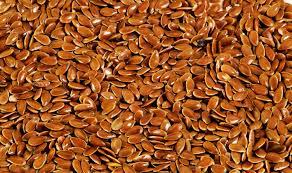Omega-3 Fatty Acid Sources

Flax. Fish oil. Chia. Krill. Algae. By the time I write this there could be another source, also claiming to be the best for some reason. Do you need to supplement omega-3 fatty acids? If so, which source is best?

Golden Flax Seeds
Although research is lacking in horses, the omega-3 and omega-6 fatty acids are essential in other species – must be present in the diet because they cannot be synthesized at all or in high enough amounts for optimal health. Also lacking for horses is what level of intake is needed.
If we look at horses in peak grazing season on green grasses, a 500 kg horse is taking in around 200-264 g/day of omega-3 in the form of alpha-linolenic acid. Levels drop with extremes of weather (including heat, drought) and are very low in cured hay. Horses on hay, hay and grain, vegetable fat enriched diet have very high omega-6 intakes, minimal omega-3.
The plant omega-6, alpha-linoleic (AL), is metabolized to arachidonic acid (AA), generally considered to be proinflammatory and omega-3, alpha-linolenic (ALA) to eicosapentaenoic acid (EPA) and docosahexaenoic acid (DHA) generally considered to be antiinflammatory but these characterizations are an oversimplification.
AL and ALA are predominant in plant sources like grass, flax, chia. DHA and EPA are not naturally present in the equine diet. They are high in fish oil, krill oil. Some algae are high in DHA.
DHA is involved in sperm motility, but supplementation of stallions was not beneficial except for a few that had abnormal motility to begin with. It is also involved in follicle development in mares but a bovine study found plant ALA was just as beneficial as DHA. Beneficial antiinflammatory effects have been documented in horses for flaxseed, fish oil and in one study algae. However, a study comparing fish oil and flaxseed found reactions to skin injection of an irritant were actually increased with both supplements compared to horses with no supplementation. Suffice it to say our understanding of the functions of omega-3 fatty acids is incomplete.
Flaxseed has the longest history of equine use, being a favorite for coat enhancement before anyone was thinking about omega-3s. It is also low sugar/starch and high in soluble fiber. Critics point to high levels of phytoestrogens but there is not a single report of an estrogenizing effect from flax in any species, even at up to 10% of the diet. Chia is another plant source with an omega-3:omega-6 ratio similar to flax but is more expensive.
Horses are herbivores, evolved on a diet of grasses. They do not eat fish, tiny crustaceons or algae. When the goal is to provide omega-3s missing in a diet of hay or hay and grain it only makes sense to provide levels and types normally found on pasture. Preformed DHA and EPA may eventually prove of benefit in treating certain conditions but for now and for basic supplementation I would stick with flaxseed.
Eleanor Kellon, VMD [Source]
